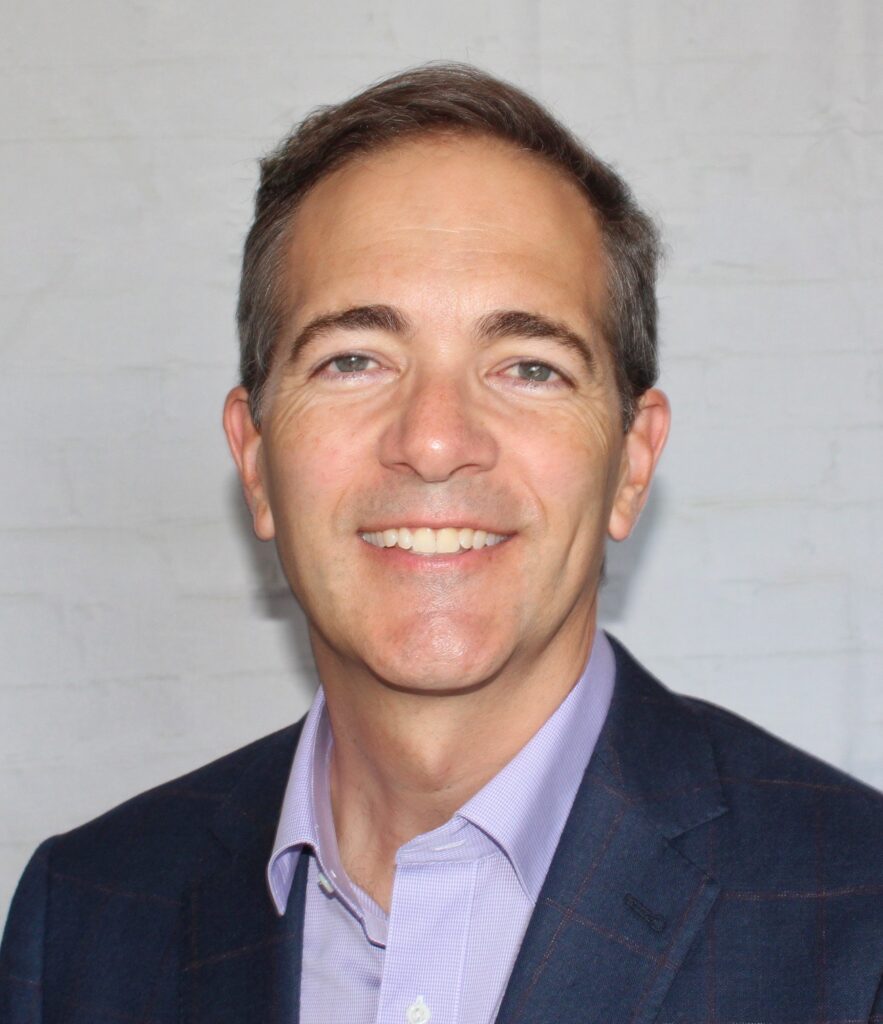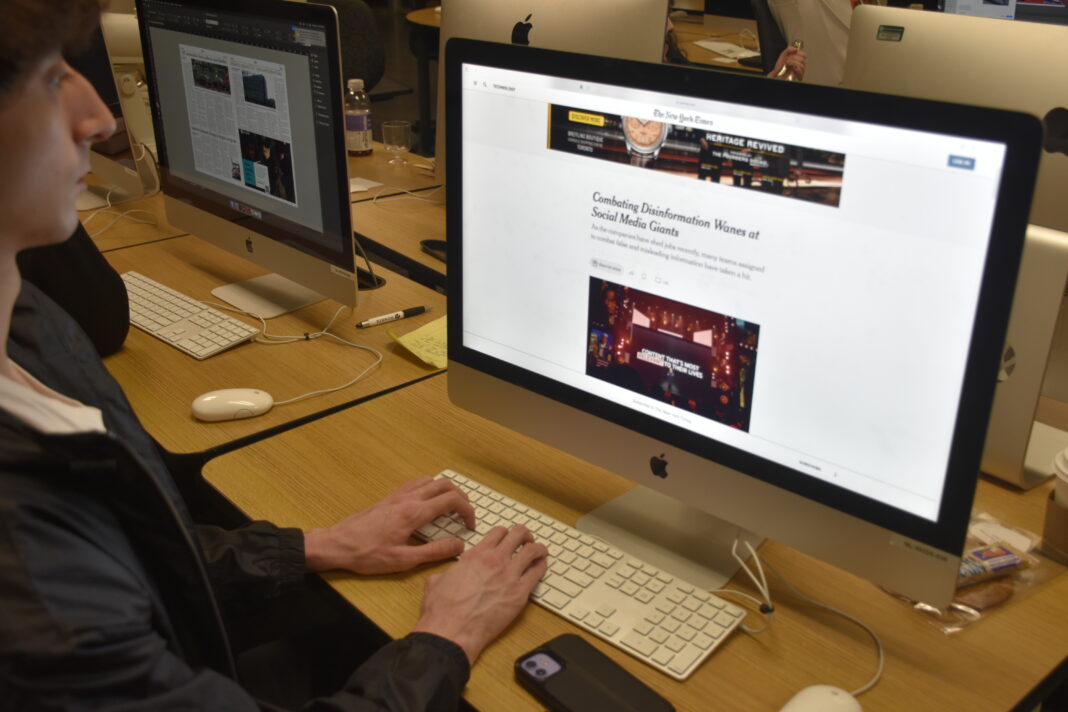Finding the truth in a world of misinformation
By Sam Belton
The Rainbow Bridge vehicle explosion was initially and falsely thought to be terrorism.
CTV News tweeted on Nov. 22, that Canada, according to national security sources, was operating under the assumption it was a terrorist attack.
FOX News also reported the attack to be terrorism on the same day.
But, also on Nov. 22, CTV News corrected this, quoting New York Governor Kathy Hochul as saying there is currently no indication of a terrorist attack. FBI Buffalo, they said, also investigated the scene and found no explosives nor terrorism nexus.
Two days later, FOX corrected itself too, also reporting that Hochul said there is no sign it was a terrorist attack.
Authentic news and misinformation can be hard to distinguish, says Siobhan Moore, a journalism professor at Humber College.
“How do we convince people not to believe what they want to believe? That is an excellent question,” Moore says.
In fact, according to Pew Research Centre, adults aged 18-29 are almost as likely to trust social media as national and local news outlets.
Fifty per cent of U.S. adults under 30 have some or a lot of trust in social media sites’ information in 2022, compared to 33 per cent of all adults.
This is a big change from 2016, only 44 per cent of adults under 30 had a lot of trust in social media sites for information.
The digital culture has undervalued the role of expertise.
Jeffrey Dvorkin
Misinformation is not malicious, whereas disinformation is, says Jeffrey Dvorkin, a journalist and former program director of the Journalism program at the University of Toronto-Scarborough.
“[Misinformation] is when your Uncle Fred sends you something he’s seen on the internet and thinks you might find it interesting. He’s not worried about how true it is, he’s just worried about how interesting or amusing it is,” Dvorkin says.
Disinformation, on the contrary, is distributed deliberately and maliciously to try and distort a fact. People do this to make people anxious and raise distrust in the media.
“This is done by people who have, often, a political agenda or an economic agenda. It is important for people to understand how to differentiate between misinformation which is benign and disinformation which is not,” Dvorkin says.
This is because CTV reported the crash as terrorism without intention, thinking they were reporting the truth.
Mike Karapita, a journalism professor at Humber College, says a common motive behind disinformation is creating mistrust everywhere.

“It’s sort of the idea that instability breeds more instability and unstable people like nothing better than to make you and everybody unstable. So, the goal is to kind of turn everything on its head and make everybody question everything,” he says.
If your goal is nefarious, you’ve succeeded, he adds.
Karapita also says misinformation and disinformation are both difficult to stop. Although misinformation can be corrected if it was a mistake made by a news agency that then releases a statement revising it, disinformation, on the other hand, may keep getting shared from place to place without people knowing the truth.
“Disinformation, you almost end up playing a game of Whack-a-mole where you take it down in one place but it will show up somewhere else,” Karapita says.
He says it is impossible to stop completely.
Karapita is the author of the publication “Finding and Fighting Fake News.” He wrote in this piece that fake news is impossible to verify and comes from non-credible or straight-up fake sources, appears to be authentic, and comes from people with an agenda to influence opinion, discredit authority or even overthrow a government.
An example of disinformation, according to his publication, is the 2019 fabricated story of Justin Trudeau paying millions of dollars to a person who alleged sexual misconduct from him. It turns out, it was a fake story by the Buffalo Chronicle.
According to Karapita’s publication, the Buffalo Chronicle has written numerous articles on Canadian topics that ended up being shared, liked, and commented on on Facebook hundreds of thousands of times.
According to Media Bias Fact Check, they are a website with minimal credibility because of extreme right-wing bias, no transparency, promoting conspiracy, and absolutely failed fact checks.
Despite that, according to Karapita’s publication, they have millions of fans.
Moore says trust in the news is eroded when a large number of people advise others not to trust the news and give them different avenues to pick and choose from where to get their information.
“There’s a lot of trust that we’re asking people to have in us, we’re doing those three things, we’re accountable to the facts, we’re accountable to the sources, we’re accountable to them,” Moore says.
She also says we have to stay true to the principles of journalism, and the code of conduct.
Karapita wrote in his publication that there is a separation between journalists and the public that did not exist before. People do not know journalistic standards and practices, nor what happens in newsrooms. Journalists used to be friends of the public. They knew them, they attended their events, and had a community connection. This, plus the new information easily available, has evaporated the public trust.
“I think we’ve got to really start thinking about storytelling in a different way that moves beyond legacy media and social media. How do we as a society tell stories that are real with import to an audience that is interested? That’s the dilemma. But we’re getting all caught in the technology which has gotten ahead of us, I think,” Moore says.
There has been much disinformation and misinformation in the wake of things such as recent wars, with Israel and Hamas and the Russian invasion of Ukraine, says Mike Wise, a professor of journalism and program coordinator of the Post Graduate Certificate program at Humber College.

Wise says that if journalists rely on public networks such as social media to get their content out as opposed to their own platforms such as newspapers and news agency-owned websites, they are not only competing with legitimate news organizations, but also people with less credibility.
The CBC’s job cuts, 10 per cent of its workforce, is partly connected to digital competitors.
“These pressures are a result of the same structural factors affecting all media companies in Canada, including rising production costs, declining television advertising revenue and fierce competition from the digital giants,” says a media release from the CBC.
“Social media strips away all of the common branding and signals that we send, journalists can send people to say ‘Hey, this is big, this is legit.’ The lead story on a newscast, the big type font on the front page of a newspaper that signals to the audience, ‘Hey, this is something, here’s something we did, here’s the brand.’ Like a post is a post is a post,” Wise says.
Wise says social media also takes away the responsibility of actual editors who choose the best news to publish. Consumers can subscribe to whom they wish, react how they wish, and share and emphasize stories of their choice.
“We are more likely to believe things we agree with,” Wise says.
Wise says it is hard to convince people to trust authoritative sources because everyone has a voice on social media.
Karapita wrote in his publication that chief factors for why people believe fake news is that it is easy to access, looks real, plays on emotions, spreads fast, and is rampant on social media. Also, some fake news contains an element of truth that people may use to justify their belief in the credibility of the rest.
Karapita advocated that people should think for themselves and not believe every single thing they come across, regardless of the source.
“When somebody tells you something, that’s great, then you need to check for yourself. Especially if it’s something you consider highly contentious or outrageous or unusual,” Karapita says. “We need to teach people that just because something exists in print, in a social media post, or in an article, or in a photo or a video, doesn’t necessarily mean any more that it’s the real deal.”
Karapita says we need a healthy skepticism, meaning people check into what they find out before trusting it.
Wise says in this day and age, trust must be earned.
“In the old days, you trusted your doctor because they were your doctor, and they said things. You know, you trusted the editor of The Toronto Star because that was their job there,” he says.
In this era, we pick and choose, and find other content and people to believe.
Wise supports “horizontal reading” and people not taking what they read at face value, and asking critical questions.
“It is part of your job to stop, think through, and be critical, and evaluate your sources as they come in,” Wise says.
Karapita says we all want to be first, fast and right, but sometimes it is better to slow down and thoroughly examine our information to prioritize correctness over timeliness. He says we have to lower our expectations that everyone will respond as quickly as possible all the time.
“We have to slow down the pace in people’s expectations in our instant world of gratification and information. We have to slow it down,” Karapita says.
Dvorkin says consumers are more inclined to believe fake news because of confirmation bias, when consumers look for things to confirm their beliefs.
“At a time when there’s so much content being thrown at us from every possible platform, people want to find ways in which they can simplify reality,” Dvorkin says.
Disinformation is often the result of confirmation bias. People will forward content, which could be from an unauthentic source, because they believe it, when it may not be true.
Karapita believes confirmation bias plays a large role in how people choose what to believe.
“Our worldview dominates how we see the world,” Karapita says.
He says we tend to accept things we already believe and reject things we don’t, and that confirmation and personal bias, such as political and moral beliefs, go hand in hand.
“The digital culture has undervalued the role of expertise,” Dvorkin says. “Your opinion, my opinion, Joe Blog’s opinion, have a kind of equivalence.”
Dvorkin pointed to the danger of disinformation by saying it creates moral panic.
“This is the idea that there is something seriously wrong going on out there, and something needs to be done or a victim needs to be identified,” he says.
It may create a sense of anxiety in the public. A good example of disinformation’s danger is Hillary Clinton losing the election because of Russians alleging she was anti-Christian. A large number of people on the internet were willing to believe this.
“There was kind of a stupid cartoon showing Jesus arm-wrestling with the Devil. And this was sent to a number of people who the internet had identified as religious people in the midwest of the United States,”
So, midwest voters doubted Clinton, and Donald Trump ended up winning.
Dvorkin says there is an undermining of reliable sources of information. He says media organizations should educate the public more on where their information and stories come from. He wrote in his publication that the public should be educated on the steps taken by news agencies before they publish their information.
“If something doesn’t feel right, then the more credible organization won’t go near it,” Karapita says.
He referred to the “spark phase” of disinformation, which he said in his publication “Finding and Fighting Fake News”, is when something gets posted online.
“The spark phase is really tricky because it can go from a small spark to an inferno in no time flat. And that’s where discipline and professionalism matter the most.” Karapita says.
Following the spark phase is the kindling phase, when the disinformation is shared and it picks up online. Then, the gasoline phase is when people with false credibility, such as fake trusted verifiers, start repeating things online. So, even if an idea is refuted, it is impossible to stop its spread at this point.
National Public Radio’s (NPR) program “On the Media” urges the public not to react right away upon seeing breaking news.
Journalism students should always have critical thinking skills, when reading discussions online, seeing organized groups, and asking questions about it, Wise says.
“Know your platforms so that, for example, The New York Times, although they’ve made one big mistake, but basically, they’ve been very responsible, the CBC, The Toronto Star, The Globe and Mail, they’ve all been responsible about saying where the stories come from, if it comes from their own reporters, or whether they’ve picked it up from a trusted source, a wire service,” Dvorkin says.
Photographs can also be manipulative. A good example of something that should have been analyzed further was a photo alleged to be taken in Gaza but was actually from the war in Syria from a few years earlier, Dvorkin says. So, consumers must be more careful about what they consume and share.
Wise is a supporter of The Trust Project, an international consortium of media outlets promoting certain standards. Examples are having bios for reporters, showing their expertise, and motives for reporting stories.
“Explaining to people, even, what does it mean to have an off-the-record interview? It’s not anonymous, it’s not a manila envelope under the door. We’ve had a conversation and they are trying to protect themselves,” Wise says.
Wise believes in promoting media literacy because the audience is not necessarily as media literate as reporters. He says journalists should remind them of the basics of how they do their job and why their work may be better than someone else’s.

